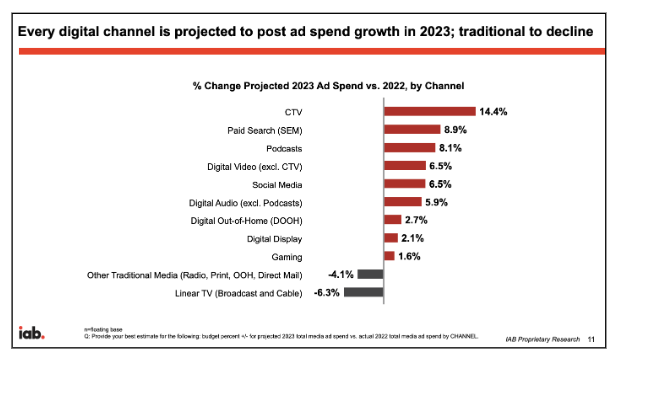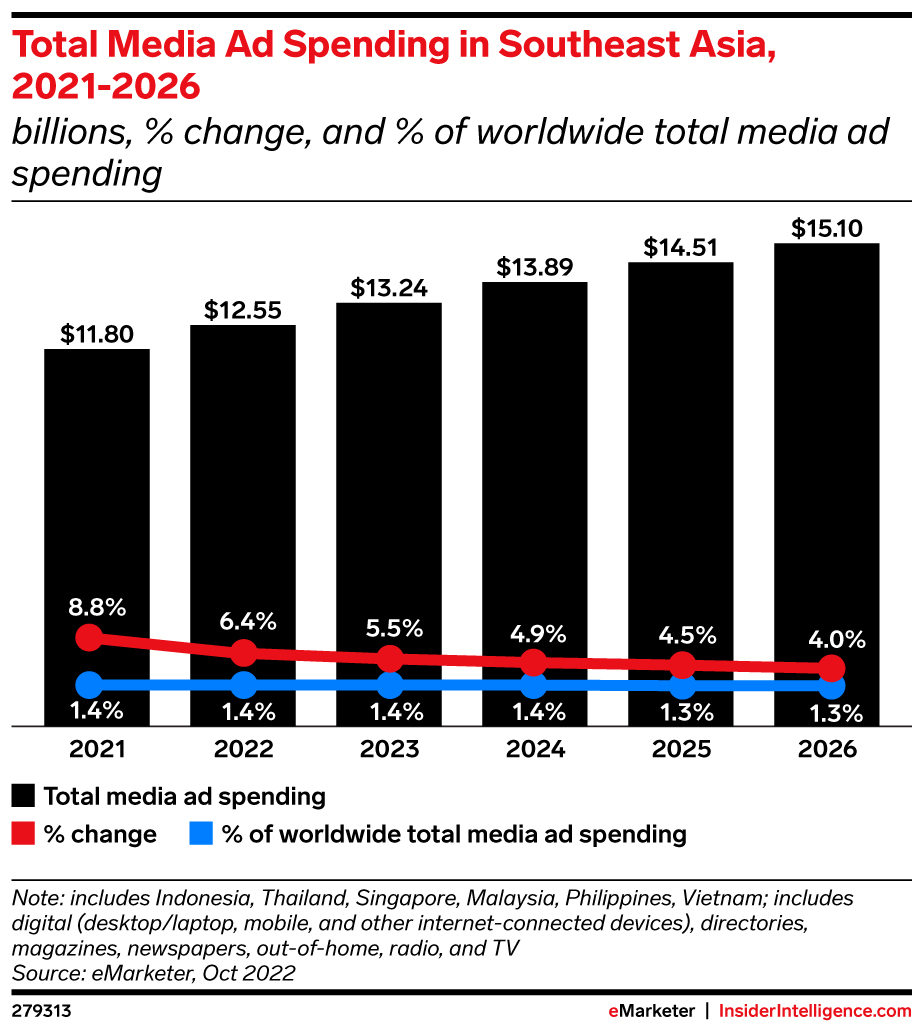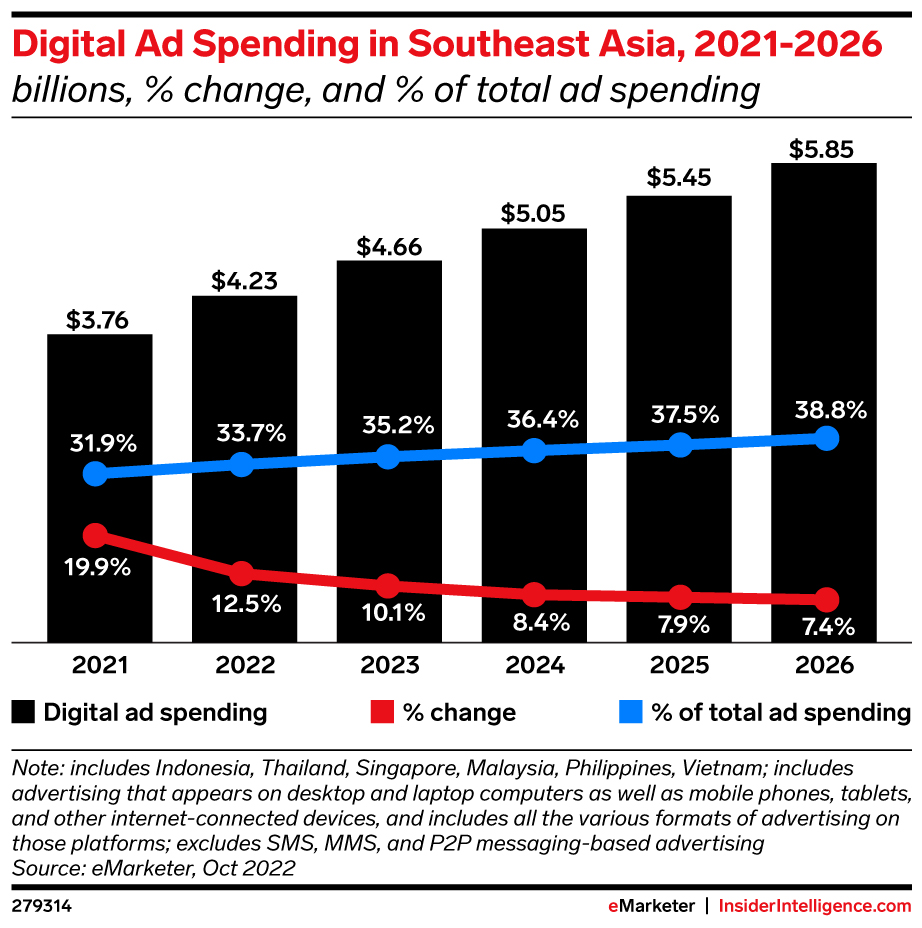Innovations in Media Quality With The Emergence of New Mediums
Worldwide, it is common to hear that numbers don’t lie. And, in today’s data-driven world, this statement holds more reason than ever. For advertisers, it has become increasingly important to analyse the performance of their digital campaigns and figure out how to increase efficiency and impact. Success for marketers goes hand-in-hand with innovation. Therefore, advertising is increasingly focused on emerging mediums such as Audio, Gaming, and Connected TV (CTV). Let’s look at a few statistics to understand how audiences interact with these emerging mediums:
- Audio: eMarketer estimates that US radio and digital audio services will pull in $16.8 billion in ad spending this year. 75% of Industry Pulse respondents expect ad investments to expand in 2022 to match consumer adoption of digital audio.
- Gaming: Worldwide, there are 3 billion gamers, many of whom are niche and younger audiences less receptive to traditional TV and online advertising. Gaming is ripe for innovation, with a recent study finding that nearly one-in-five media experts are planning to prioritise advertising in video game environments next year, whilst another survey found that 32% of advertisers plan to increase in-game budgets.
- CTV: Ad spending growth is expected to slow down in 2023, but buyer investment in connected TV is projected to increase by 14.4% in 2023 compared to 2022, according to new outlook research from IAB. CTV ad spending will likely exceed $26 billion in 2023 and $31 billion in 2024.
 While emerging mediums present a lucrative opportunity for advertisers, it becomes critical to measure the performance of your ads in these formats. Therefore, media quality and measurement will need to evolve with it too. With the help of digital media quality solutions, marketers can ensure that their digital campaigns are safe, viewable, in-geo and suitably placed to make maximum impact and create outcomes. The IAB research found that more than half of buyers (52-55%) expect to focus more time and resources on measurement, marketing mix and modelling (MMM), 1st party data, and creators in 2023.
While emerging mediums present a lucrative opportunity for advertisers, it becomes critical to measure the performance of your ads in these formats. Therefore, media quality and measurement will need to evolve with it too. With the help of digital media quality solutions, marketers can ensure that their digital campaigns are safe, viewable, in-geo and suitably placed to make maximum impact and create outcomes. The IAB research found that more than half of buyers (52-55%) expect to focus more time and resources on measurement, marketing mix and modelling (MMM), 1st party data, and creators in 2023.
Let’s take a look at how advertisers can make the most of advertising on these emerging mediums:
Measurement is the first step to providing transparency.
To understand the true impact of your digital campaigns, one needs to know how well their ads performed. Was your ad seen by a real human? Was the ad placed alongside relevant and brand-safe content? Did the user engage with your ad?
Tech-backed solutions will provide granular detail on impressions, measuring how clearly and for how long ads are viewable. If applied against MRC standards, which include parameters like the angle of the ad, real estate occupied by the ad, and whether any object is blocking the ad, advertisers will have access to comprehensive transparency. With this information, brands will be able to validate the impact of their ads and maximize engagement.
Transparency of ad performance in emerging mediums will offer advertisers refined measurements so brands can target the most relevant inventory, providing crucial confidence that ad spend is producing results. Even still, transparency means everybody wins: transparency entices advertisers seeking greater clarity of their in-game ad budgets, engaging real users and driving outcomes while allowing publishers to charge a premium for such quality ad space and engagement.
Recommended: 5 Biggest AI Tools You Should Be Using Right Now with ChatGPT
Partnerships between brands and measurement platforms will be critical to erase doubts over transparency and ad performance, issues that have long plagued the ad tech industry. Integral Ad Science’s partnership with Spotify is one example, where they announced a new partnership to establish a third-party brand safety solution for podcast advertisers. With podcasts expected to reach more than 500 million listeners worldwide by 2024, this solution will offer advertisers more control and confidence that their messages will deeply resonate with their intended audiences.
Delivering Impactful Ads Through Contextual Solutions
Contextual solutions can ensure brand suitability by preventing ads from appearing in harmful environments and making ads relevant by appearing in targeted environments. Natural language Processing (NLP) technology offers full-page contextual analysis in real-time. Our study on “Ad Context and Attention” revealed how increased consumer attention to contextually relevant ads leads to greater purchase intent and brand favorability.
AI in Social Media Marketing: New Prediction: ChatGPT Content Would Flood Social Media Platforms
Online games have a reputation for adult, drug and violence-related content, which is not the ideal environment for most brands to advertise. Contextual technology helps brands avoid running ads next to unsuitable content and ensures brands can target the contexts that drive greater results for their specific campaigns. For example, 57% of gamers are likely to purchase from a brand whose ads are relevant to the content of the game they are playing.
With the phasing out of third-party cookies imminent, contextual advertising provides marketers with an excellent solution to reach their target audience in a privacy-compliant manner.
Keeping Ad Fraud at Bay
Fraudsters are notoriously known to follow the money; in the case of CTV advertisements, it is the same. Since the CTV environment is still fairly new to the advertising space, IAS expects higher levels of malicious, fraudulent activity across less transparent and long-tail inventory; additionally, due to the lack of standardisation of CTV signals, there are often false positives.

Differentiating between real and fake traffic is still a pressing concern for most advertisers. It is well known that cybercriminals can use bots to watch video content, click links and move between web pages, mimicking the actions of a human.
Given the various types of ad fraud present, brands and advertisers need to be educated about the origin of ad fraud, the differences between different types of ad fraud, and how to prevent ad fraud. Regarding gaming-related ad fraud, live scoring based on GARM categories provides precise control over the kind of environments in that ads are seen. Real-time analysis can monitor gameplay changes so that brands can appear next to relevant content as it appears. Ads can be rendered in environments based on the context of the gameplay (i.e. avoided during an explosion or warfare).

 While advertising on emerging platforms is a lucrative proposition for marketers, they must check whether measurement and brand safety solutions can be used to understand the true impact of digital campaigns.
While advertising on emerging platforms is a lucrative proposition for marketers, they must check whether measurement and brand safety solutions can be used to understand the true impact of digital campaigns.








Comments are closed.